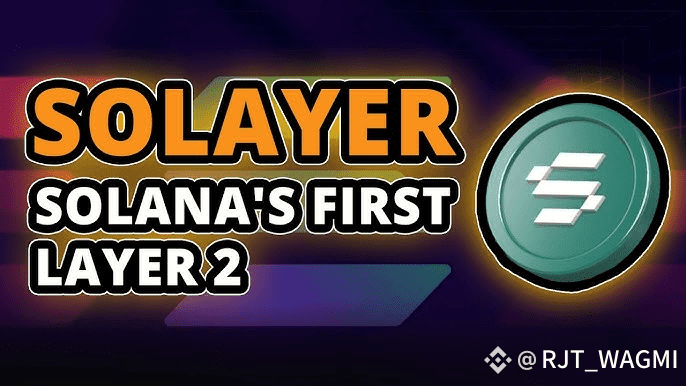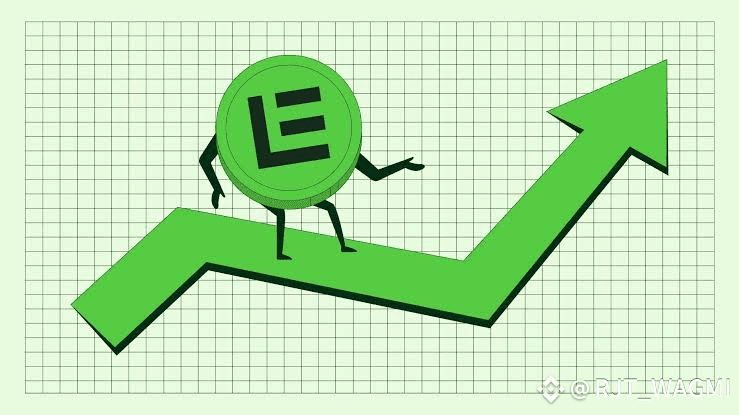The Scalability Dilemma in Blockchain
Scalability has always been the toughest barrier for blockchains. While Solana already leads the industry with its high throughput and low fees, the demands of modern decentralized finance (DeFi), AI-driven apps, and on-chain gaming are outpacing even Solana’s current capabilities. To truly unlock the next wave of Web3 adoption, blockchains need millions of transactions per second (TPS), ultra-low latency, and seamless interoperability—all without sacrificing decentralization.

This is the vision behind Solayer, a next-generation blockchain infrastructure project that merges hardware acceleration with Solana’s software foundation to push performance into entirely new territory.
What Makes Solayer Different?
InfiniSVM: The Hardware-Boosted Engine
At the core of Solayer lies InfiniSVM, a hardware-accelerated Solana Virtual Machine. Unlike traditional blockchain systems that depend solely on software execution, Solayer offloads key processes to programmable chips and high-performance networking protocols. This design enables:
1M+ transactions per second (TPS) capacity
100 Gbps network bandwidth
Near-zero latency applications, from DeFi trading engines to metaverse-scale gaming
With InfiniSVM, Solayer isn’t just scaling incrementally—it’s aiming to build the fastest, most efficient blockchain infrastructure ever deployed.
Restaking for Security + Yield
Solayer also introduces a restaking mechanism that lets SOL holders delegate their assets beyond just securing the Solana base layer. They can now support decentralized services, protocols, and validators, boosting network security while earning additional yield opportunities.
Shared Validator Network (SVN)
Instead of requiring separate infrastructure for every new protocol, Solayer enables validators to secure multiple systems simultaneously. This reduces operational redundancy and strengthens the ecosystem’s resilience.
Actively Validated Services (AVS)
Through AVS, applications on Solayer can launch their own Liquid Staking Tokens (LSTs), making capital more efficient and ensuring smoother liquidity across DeFi. This opens the door for innovations in staking derivatives, lending, and yield strategies.
Emerging Token Economy
$LAYER → Native token for governance, staking, and transactions. Supply capped at 1B, with 210M circulating as of Feb 2025.
$sSOL → Yield-bearing token representing staked SOL, giving users liquidity while still participating in delegation.
$sUSD → A stablecoin backed by U.S. Treasury Bill yields, blending real-world financial security with decentralized scalability.
The Roadmap: Building Web3’s High-Performance Backbone
Solayer Labs has ambitious plans for 2025 and beyond:
Expansion of the Shared Validator Network to secure more protocols.
Integration of additional Actively Validated Services for wider DeFi adoption.
Ongoing hardware optimization to achieve target throughput and network speed.
Real-world adoption initiatives, such as the Emerald Card program, where users earn on-chain rewards from everyday spending.

These milestones position Solayer not just as an upgrade for Solana, but as a next-gen infrastructure layer for Web3 at scale.
Why Solayer Matters
The blockchain space is entering a new phase where speed and efficiency will determine mass adoption. DeFi traders want sub-second finality, AI-powered dApps require massive parallelization, and gaming projects need smooth, high-frequency interactions.
Solayer provides the missing piece: a hardware-accelerated, infinitely scalable blockchain layer that allows Solana to handle workloads at the level of global financial systems or social networks. By combining security, yield opportunities, and enterprise-level performance, Solayer could become the foundation for the next wave of high-performance decentralized applications.

🔥 Solayer isn’t just scaling Solana—it’s reengineering how blockchains operate at a fundamental level.
Follow the movement: @Solayer | #BuiltonSolayer | $LAYER


